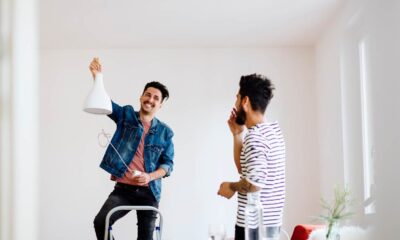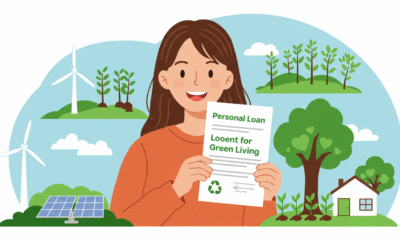

Energy
Tips for Eco-Friendly Citizens Trying to Move Off Grid
There are a lot of different approaches that you can take if you want to live an eco-friendly lifestyle. One of the most effective strategies is to reduce your dependence on consumerism.
You can take a very drastic step and live off the grid. You will have a very small carbon footprint and consume few natural resources if you are trying to live outside of our decadent culture.
Living Off the Grid to Become a Better Steward of the Planet
At least 180,000 families in the United States currently live off grid. Many of them are committed to green living. Living of the grid is attractive for it’s eco-friendly and self-sustainable benefits, off-grid living is a rewarding, cheaper, and simpler way of life.
If you’re currently a city dweller looking to make a move off grid, there are a number of simple yet effective ways you can start preparing now for this change. By starting to think now about possible off-grid water sources, looking at how much energy you currently use, and learning to grow your own food, you can better prepare yourself for embarking on this adventure in the future.
Consider your water source options
Finding a clean and safe water supply is one of your main priorities in preparation for off-grid living. Overall, you’ll need enough water for drinking, bathing, cooking, and gardening on a daily basis. Fortunately, you have a number of options available to you depending on your chosen land. For example, a water well is one of the most common off-grid water sources. If the land doesn’t already have a well, you’ll need to drill a new one. Drilling a 150 foot-deep well costs around $5,500 on average. However, if you want to increase the depth, the price also increases accordingly. Generally, wetter regions can get away with shallower wells whereas dryer climates require deeper wells. You’ll also need a pump to draw water from your well. In addition to basic manual pumps, you also have the option of solar-powered or electric pumps. A good pump is essential for enhancing the efficiency of your well water collection.
Alternatively, you could harvest your own rainwater, which is a particularly good option if you’ll be moving to an area with high rainfall. Installing a rain catchment system on the roof of your property works to divert the rainwater that hits your roof and collect it in a storage container. You can also calculate how much rainwater you’ll be able to harvest this way depending on the square footage of your roof and your local area’s average rainfall volume. However, this system is only suitable for slate or metal roofs. Asphalt roofs, on the other hand, aren’t safe to use for diverting rain water intended for drinking. You’ll also need to invest in a filter to make sure your rainwater is safe for drinking.
Look at how much energy you currently use
If you’re currently relying on the grid for your energy consumption, you’re probably not living a lifestyle that would be sustainable off grid. So, take a close look at how much energy you currently use and work on minimizing your expenditure as much as possible. Check your monthly electric bill to find the number of kilowatt-hours consumed each month. And, to get a clear picture of how much energy and money each specific device in your house uses, invest in a plugin kilowatt meter (for under $20). With this knowledge, you can identify ways to cut down on your energy consumption — small changes will add up over time. By the end of this process, you’ll know how much energy at minimum you’ll need for off-grid living, which can help you plan more efficiently and accurately. You can even start familiarizing yourself with renewable energy sources. In particular, solar, wind, hydro, and geothermal are popular alternative energy sources.
Building your own home solar water heater, for example, is an affordable and surprisingly simple project that can prepare you for off-grid living and help lower your current energy bills.
Practice growing your own food
Growing your own food can be a learning curve, but it’s also a rewarding part of off-grid living. Not only does growing your own food decrease your monthly living expenses, but knowing exactly what’s gone into your food and where it comes from can provide significant peace of mind. It also tastes amazing. Even better, growing your own food is a skill you can start teaching yourself now. You don’t need a lot of space to grow your own food, or even a garden. Beginning with a few herb pots on your window sill is a great start. You can also look up community gardens in your local area. Not only are community gardens a valuable opportunity to start learning how to grow your own food when you have limited space, but they’re also great for meeting new people, including experienced growers who’ll likely be happy to share their advice with you.
Live Off the Grid to Reduce Your Carbon Footprint
Off-grid living offers a more peaceful, sustainable, and relaxed way of life. It can also be a great way to lower your carbon footprint. By starting to think now about your potential water options, looking at how much energy you currently use, and practicing growing your own food, you can better prepare yourself for making this life change in the near future.


 Environment10 months ago
Environment10 months agoAre Polymer Banknotes: an Eco-Friendly Trend or a Groundswell?

 Environment11 months ago
Environment11 months agoEco-Friendly Home Improvements: Top 7 Upgrades for 2025

 Features9 months ago
Features9 months agoEco-Friendly Cryptocurrencies: Sustainable Investment Choices

 Features10 months ago
Features10 months agoEco-Friendly Crypto Traders Must Find the Right Exchange




























